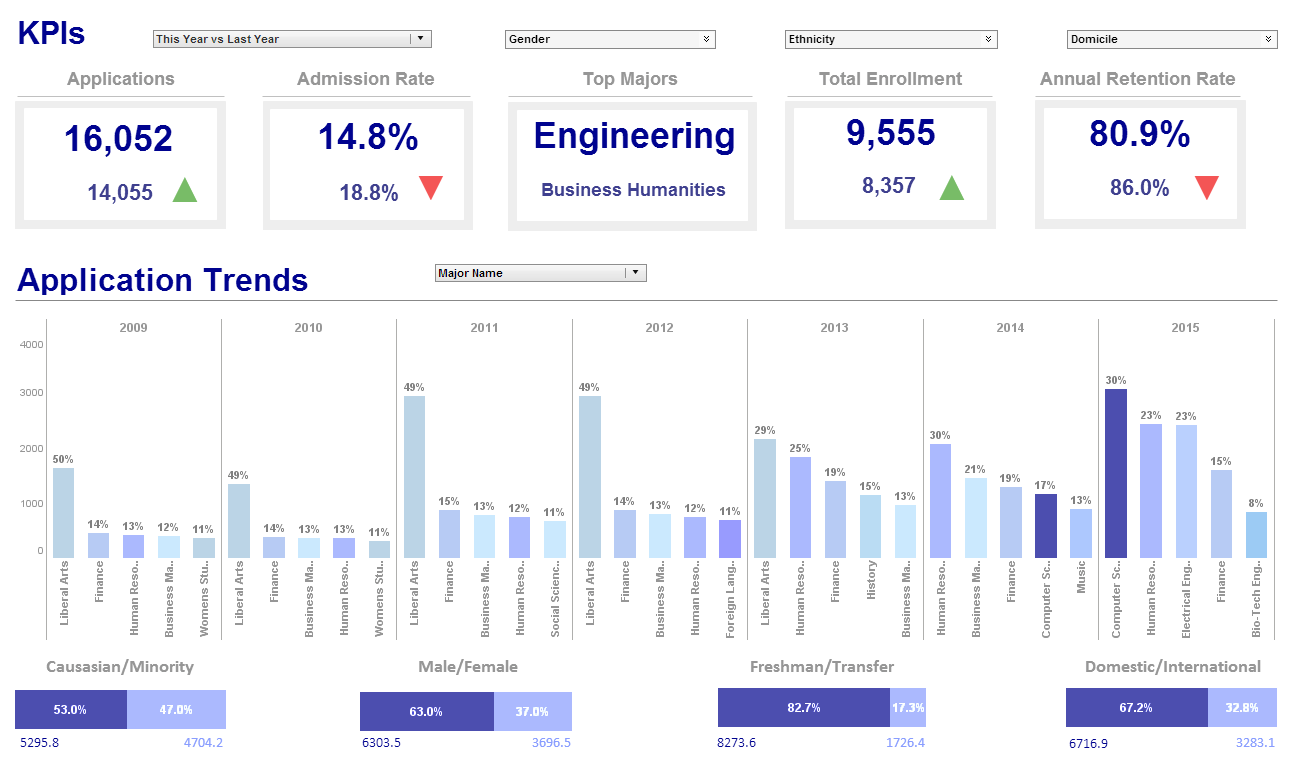Intuitive Self-service BI
Below is the continuation of the transcript of a Webinar hosted by InetSoft on the topic of Developments in Business Intelligence Software. The presenter is Mark Flaherty, CMO of Marketing at InetSoft.
What are you hearing from customers regarding InetSoft StyleBI, and what is the reaction to the concept of intuitive self-service BI?
Mark Flaherty (MF): While InetSoft has been providing reporting software for fourteen years, our BI platform, StyleBI has been in the market for four years now. The adoption rate is growing. And part of the reason is because of the feedback we are receiving from customers so along the lines of this: they start to put the software into the hands of certain people in one department, others start to see the use of that dashboard and reporting tool by their colleagues, and then the usage grows in a kind of viral fashion because there is really no training involved.
The way an end user can easily explore and understand their own data without IT involvement is very compelling for those co-workers. So that tends to spread to others. It’s easy to access the application since it’s Web based, and all that is needed is a browser. You just need a to make simple request to IT to get permissions, and then soon you could be exploring your own data. So it has a very viral spreading effect in organizations, and we have seen that kind of intuitive simpleness really appealing to end users that otherwise have struggled with traditional BI tools.
 |
View a 2-minute demonstration of InetSoft's easy, agile, and robust BI software. |
Even at InetSoft here we have seen the adoption of StyleBI as the most popular BI tool within our ranks, compared to Excel, let’s say, and this is obviously because we want to drink our own champagne, but we have seen StyleBI used by not only by the C level, which is important for them to understand quarter end results, but also any one of us in the organization regardless of level in the company.
So the adoption rate is growing. Part of the reason is simplicity and ease of use, but also from an IT involvement, how easy it is to set up and start to turn through large volumes of data without this large data warehousing project in front of them. So, so far, things are tracking very well in terms of customer adoption and feedback for the BI solution.
What is great is that we can bring a solution in to the client that really has a really fast implementation time in terms of getting something productive up and running in weeks. Not having a project last a year or two years is a very, very important thing. If you look back to the old times of business intelligence, it took people sometimes years to consolidate data and to draw relevant data out of systems.
 |
Read why choosing InetSoft's cloud-flexible BI provides advantages over other BI options. |
